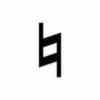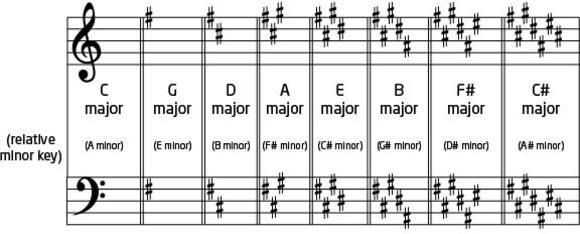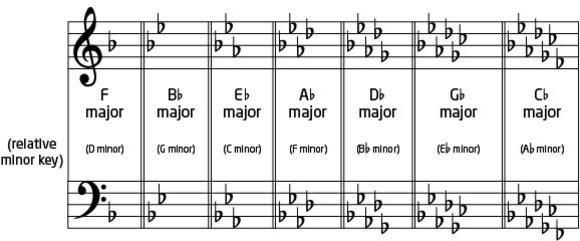Staff Lines:
The lines of the staff each represent a different note.
Staff lines in the Treble Clef are as follows:

To remember these the acronym Every Good Boy Does Fine is often used.
The spaces are as follows:

This one is easier to remember as it spells out the word FACE.
Staff lines in the Bass Cleff are as follows:

To remember these the acronym Good Boys Do Fine Always is often used (though admittedly more awkward than its treble counterpart)
The spaces are as follows:

To remember these the acronym All Cows Eat Grass is often used.
Any note placed on one of these lines will be played as the note letter notated(no pun intended). To make is more confusing each one of these notes as three basic forms: sharp, flat, and natural.
Natural is notated with a natural sign:
 to the direct left of the note along the same line or space or if a note has no signs next to it. This is the base pitch of the note.
to the direct left of the note along the same line or space or if a note has no signs next to it. This is the base pitch of the note.Sharp is notated with a pound sign to the direct left of the note along the same line or space. This will cause the note to be played a half step higher (slightly higher) than the natural.
Flat is notated by a lowercase 'b' to the direct left of the note along the same line or space. This will cause the note to be played a half step lower (slightly lower) than the natural.
All of these signs effect every note on the same line that come after the marked note and lasts until the measure is over.
Because it would be boring to play the natural of a note every time and notating every single sharp or flat pitch would become messy and hard to read we have key signatures. The key signature's job is to dictate a note's sharp, flat, or naturalness for the entire piece (or until a new key signature is introduced). These combinations of set flat, sharp, or natural notes are called Keys. For example the simplest key would be Concert C. In the key of C every note is played as its natural value and any variations from this key will be placed within the music using the sharp, flat, and natural signs.
These are the keys:


Each key has a certain number of sharps of flats that come with it. All of the notes that are on lines or spaces that represent a note that the key signature has deemed sharp or flat will be played that way through the entire piece if they are unmarked. Only if there is a natural sign next to them or the key signature changes will they be played at their natural tone again. As you can see in these diagrams every key has a relative minor key that shares its key signature. Don't worry about those for now. Hope this helps (=
Very Punny
Musicians need a leader because they don't know how to conduct themselves.
Musicians need a leader because they don't know how to conduct themselves.
No comments:
Post a Comment